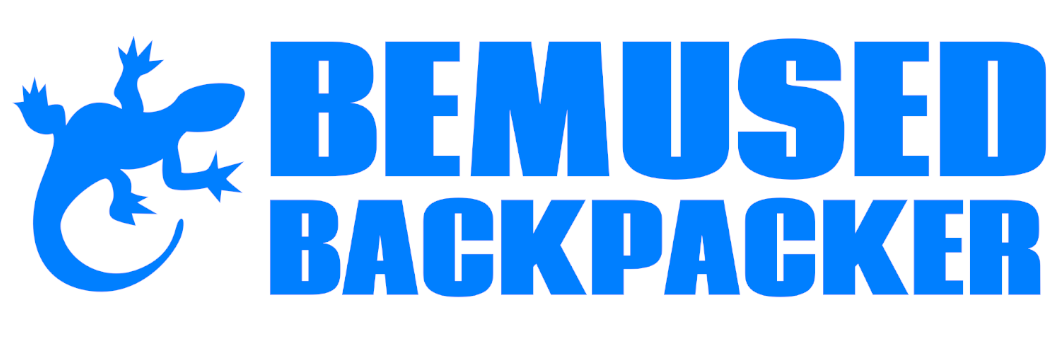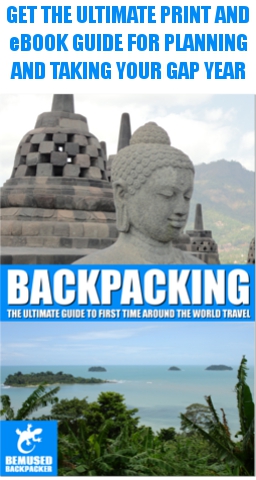
Have you ever wondered what a travel nurse keeps in their first aid kit? Well now you don’t need to! Packing the perfect emergency first aid kit for your travels is essential, but you do need to know exactly what you will need to put in there. So as a qualified emergency nurse who also specialises in travel medicine, I’m here to tell you how to do just that.
A well stocked first aid kit should be an essential item in any travellers backpack, you never know when you might need it, but it really isn’t necessary to go overboard and fill it with an entire ambulances worth of emergency life saving equipment. Just the simple basics will do.
The biggest mistakes I see with basic travel first aid kits tend to be at each end of the extreme scale. Travellers either take nothing, or they go way overboard and carry way too much equipment and medication, rarely is there a middle ground.
For those who do have a tendency go overboard, remember that clinics and pharmacies can be found in most major towns and cities throughout the world to replenish stock or buy things as you need them, so you don’t need to carry vast multiples of everything, and what you do carry you should know how and when to use it. I mean if you don’t know how to use a triangular bandage is there any point in carrying one? And it is generally not the best idea to take a ton of medication ‘just in case’ without advice from a pharmacist or nurse on whether you should be taking that medication in the first place, especially when some countrys have strict rules on what medication you can and can’t take in.
As a general rule of thumb, if you need anything more than what is in a basic kit – unless you are trained or qualified – you should probably be seeking medical assistance anyway, so there really is no need for most people to be carrying a lot of equipment.
First aid kits are there to cover basic needs in an emergency, so there is no need to carry the entire stock cupboard of your local emergency department.
So given that, what exactly should you pack in an emergency first aid kit?
The Container.
You can buy pre packed first aid kits and the pouches or bags these come in are absolutely fine, however you can use any durable pouch or container at all and tailor your own kit inside it. It really doesn’t have to be anything fancy, a small sealable tupperware box for example is ideal. As long as it is fairly durable and small enough not to take up too much space and weight and at the same time large enough to carry what you need it to, then it will do the job.
Inside The Pack.
Obviously this list can be tailored or added to dependent on your trip needs, (an extended tropical jungle trek away from civilisation will require different planning from a weekend in Rome for example) and should also include any specifically prescribed medication for individual long term conditions you may have or anti malarial prophylaxis that you will need to carry, but really the contents of your first aid kit are the absolute basics that most people will need and be able to use without any medical training.
Plasters.
It goes without saying that the most common injuries are simple cuts and scrapes, so common plasters of various sizes are always useful. It’s also a good idea to put a few blister plasters into your pack too if you plan on doing any trekking. I personally also carry a few small wound dressings such as Mepilex borders or steristrips for larger wounds out of habit, but these are unnecessary for the vast majority of people. Basic plasters should cover most basic cuts, if they don’t then it is best to seek medical attention.
Gauze.
The medical jack of all trades, can be used to apply pressure to a wound and soak up blood, or as a basic dressing for a medium or large wound with a bandage (and can be easily cut to size).
Expert tip: Put a feminine hygiene product such as a sanitary towel in your kit. This is ideal in an emergency where you have a deep wound, are losing a lot of blood and need time to get help. Think about it, press it onto the wound and they will do what they are designed to do.
Basic Crepe Bandages.
Useful for applying a small field dressing or gauze to a wound until you can get it seen to by a professional. You really don’t need to carry too many of these, one or two will do. If you are at the point where you need this level of dressing then you should probably be seeking medical advice anyway.
Medical Tape.
Used to secure gauze to a wound as a dressing.
Antiseptic wipes.
Essential for cleaning a wound before applying a dressing.
Small Scissors.
Useful for trimming gauze or bandages. You may need to ditch these and replace them in country if you are travelling with carry on only because of short sighted security rules.
Tweezers.
Tweezers are another item that often come standard in most first aid kits and can be useful for pulling out splinters, pulling skin back in place, debriding wounds (getting out little bits of stone or dirt when cleaning a wound), or any number of other practical uses.
Sterile Gloves.
Always useful in case you need to treat an injury on someone else where a lot of bodily fluid is involved, you really don’t want blood all over your hands or to introduce infection into a wound.
Condoms.
For obvious reasons! Stay safe! But they are also excellent water storage device in a survival emergency and a crude rubber glove if needed.
Pain Relief Medication.
The need to have these on standby is obvious. A small pack of basic paracetamol (acetaminophen if you are American) or any of the associated brand names is usually sufficient, but ibuprofen or other similar medications are fine too. Basically whatever you normally take for pain relief when you have a headache or minor pain is fine.
Loperamide Tablets.
Also known under a variety of brand names such as Imodium, this is useful for stopping diarrhoea for short periods when you need to catch a bus or train. Remember, these are for those emergency moments only when you are actually in transit, they shouldn’t be used when you can rest up for a couple of days and are not in any way a cure all. They are stoppers, not curers. Normally the best thing to do is to rest, let everything pass through your system normally and drink plenty of water to replace lost fluids.
Anti histamine cream.
Useful for any annoying insect bites, obviously.
When carrying any type of medication when travelling you need to be careful. All medication should be in their original packaging and clearly labelled, and check that the countries you are travelling to allow medications in any form to be carried in. If you are carrying prescription medications then you should also carry a signed letter with the prescription letter from your prescriber.
And that’s it!
Doesn’t seem like much does it? And you would be right, it isn’t all that much at all. Just enough to fill a small pocket sized pouch and deal with those minor everyday scrapes and illnesses you may get.
Anything else you could carry such as sutures, haemostats, specialist hydrocolloid dressings, non rebreather masks, antibiotics or the entire contents of a chemists stock cupboard will be next to useless unless you know how to use them, and not many people without specific first aid or medical training do, so why carry them?
For anything that requires more than the very basics, then you should seek medical attention. Keep the weight and bulk in your pack down and remember that the majority of the time you are never that far away from a pharmacy, clinic or hospital.
Related Articles.
Common Backpacker Illnesses And Diseases.
Essential First Aid Tips For Your Gap Year.
Sexual Health Advice For Backpackers.
What Vaccinations Do You Need?

Have you read all the information but still need a little more specific advice? Is there a travel health issue that you are worried about and need a little reassurance on? Need some information on malaria, or which vaccinations you will need? Is there a travel health issue you would like to ask about in complete confidence?
Well I am here to help.
Apart from being an experienced backpacker with over 20 years travel experience, I am also a qualified nurse who specialises in emergency nursing and travel medicine.
The Bemused Backpacker Travel Clinic is an indispensable online resource for you to gain a one on one consultation with a medical professional giving you personal reassurance, expert information and qualified advice for any and all of your travel health related questions. To head into the Travel Clinic, click here




